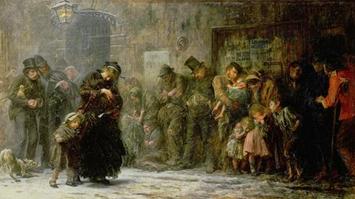
A metropolitan economy, if it is working well, is constantly transforming many poor people into middle-class people, many illiterates into skilled people, many greenhorns into competent citizens. . . . Cities don’t lure the middle class. They create it.
—Jane Jacobs
Perhaps no song has been belted out more often than the one that claims that America is moving “back to the city.” Newspapers, notably the New York Times, devote enormous space to this notion. It gained even more currency when the Obama administration secretary of Housing and Urban Development, Shaun Donovan, proclaimed that the suburbs were “over” as people were “voting with their feet” and moving to dense, transit-oriented urban centers.
This celebration perhaps reached its crescendo when Amazon initially announced its move to Crystal City, Virginia, and Queens, New York. “Big cities won Amazon and everything else,” Neil Irwin of the Times predictably enthused. “We’re living in a world where a small number of superstar companies choose to locate in a handful of superstar cities where they have the best chance of recruiting superstar employees.”
In fact, however, these views are more aspirational, or even delusional, than reflective of reality. Overall, data suggests that we are not seeing a great “return to the city” but, with few exceptions, a continued movement out to the suburbs and less dense cities, notably in the sunbelt. The spurt of urban core growth that occurred immediately after the housing bust turned out to be remarkably short lived, with the preponderance of metropolitan growth—roughly 80 percent—returning, as has been the case since at least the late 1940s, to the suburbs and exurbs. Indeed, at no point did Census Bureau estimates show net domestic migration from suburbs to core cities, only a reduced rate of migration in the opposite direction.
Even the country’s most influential urbanist, scholar Richard Florida, now suggests that the great urban revival is “over.” Rather than the usual belief that density leads to productivity and innovation, a new Harvard study demonstrates that, between 1970 and 2010, suburban areas have overall steadily increased their economic advantages: the share of suburbs making up the top ranks of all urban and suburban neighborhoods (measured as the top quartile) went from roughly two-thirds in 1970 to almost three-quarters by 2010.
Read the entire piece on American Affairs.
Joel Kotkin is the Presidential Fellow in Urban Futures at Chapman University, director of the Chapman Center for Demographics and Policy and executive director of the Center for Opportunity Urbanism in Houston, Texas. He is author of eight books and co-editor of the recently released Infinite Suburbia. He also serves as executive director of the widely read website www.newgeography.com and is a regular contributor to Forbes.com, Real Clear Politics, the Daily Beast, City Journal and Southern California News Group.












